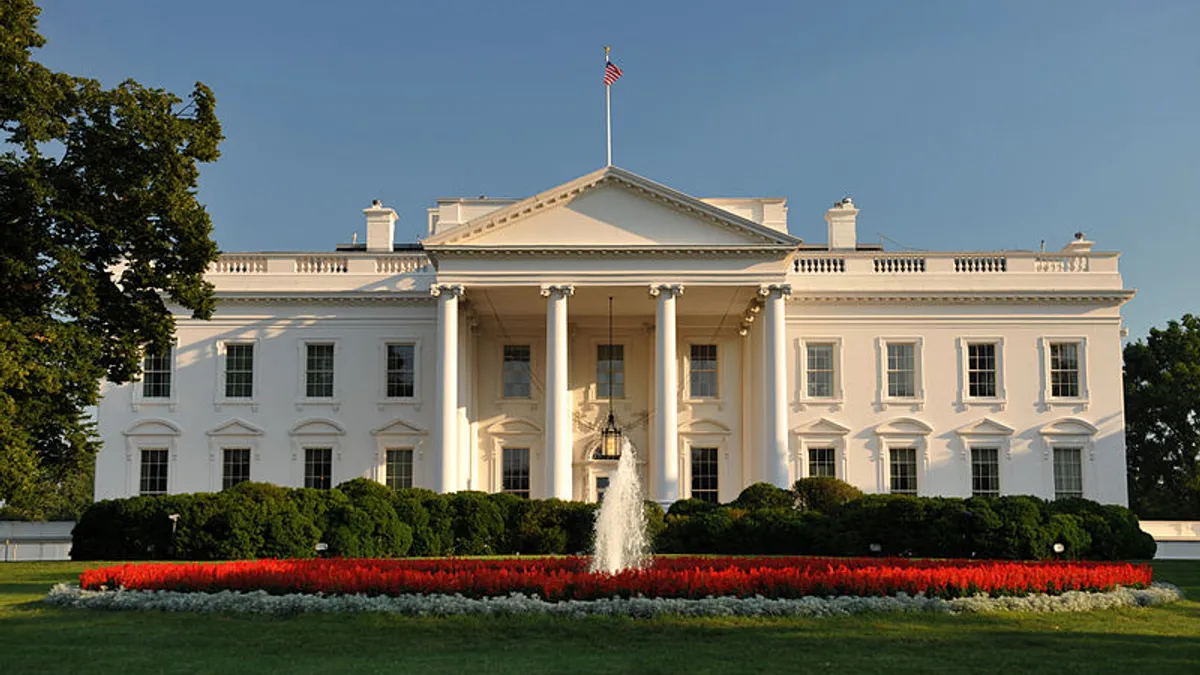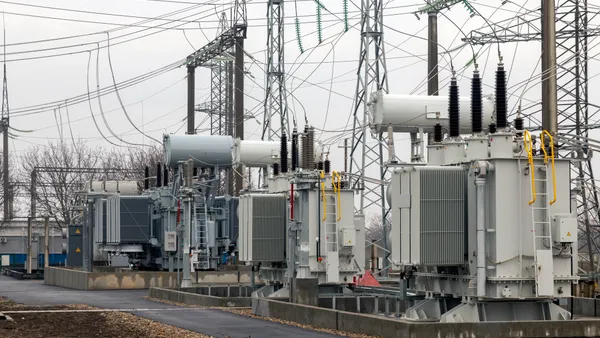Dive Brief:
- A problem with a Pepco transmission line at a southern Maryland switching station left parts of Maryland and Washington, D.C. — including several federal buildings, the D.C. metro system and the White House — without power on Tuesday afternoon, according to multiple reports. About 8,000 customers in Washington and 20,000 customers in Maryland experienced outages. Power was restored to all customers by late afternoon on Tuesday.
- The incident caused about 200-500 MW of outages, according to grid operator PJM, based on reporting by SNL Energy. The outages also caused three generators totaling about 2000 MW to go offline. PJM told SNL the transmission grid remained "stable."
- There were and still are numerous conflicting reports about the cause of the outages, including reports indicating there was an explosion at a power plant. However, SNL reported that no power plant explosion could be found or confirmed. The ultimate cause of the outages is still unclear.
- In a statement, Pepco cited a "dip in voltage" on a transmission line at Southern Maryland Electric Cooperative's (SMECO) Ryceville switching station in Charles County, Maryland. In a separate statement, SMECO said a transmission line "broke free from its support structure and fell to the ground," resulting in a loss of power supply to several switching stations. Firefighters at the scene told the Washington Post there was a small brush fire where the substation meets the transmission line.
Dive Insight:
As parts of the nation's capital were thrown into darkness on Tuesday, confusion reigned as conflicting reports quickly emerged as to the cause of the outages. There was little clear-cut information about the source of the outages, with reports ranging from a power plant explosion to a substation explosion to no explosion at all. It is not yet clear whether there was an explosion at a substation, but no power plant explosion could be found, according to SNL. Homeland Security officials assured the Washington Post that terrorism played no role in the event.
Nearby transmission lines and power plants disconnected themselves when a problem was detected, Ray Dotter, spokesman for PJM, told the Post. Some customers may have experienced a power surge, while others may have simply been subject to a loss of supply, he said.
The outage is somewhat reminiscent of the Northeast blackout of 2003, when sagging FirstEnergy transmission lines came into contact with nearby trees and caused cascading outages that disconnected over 500 generating units from the grid, leaving much of the Northeastern U.S. in the dark. However, PJM said after Tuesday's outage that the transmission grid is "stable" after protective measures took several lines and power plants offline.
As it was busy responding to the outages, Pepco released a statement in the early afternoon that was decidedly light on detail, saying the problem was due to an "issue with a transmission line." See below:
Shortly before 1 p.m. Tuesday we experienced a dip in voltage in the Washington D.C. area. This was caused by an issue with a transmission line. There was never a loss of permanent supply of electricity to customers. The dip in voltage caused equipment at some customer facilities to transfer to their backup systems. The momentary outage occurred because of customer equipment responding to a dip in voltage.
Later Tuesday afternoon, SMECO, a distribution cooperative in Southern Maryland, issued a more detailed statement:
Shortly before 1 p.m. a Pepco 230-kilovolt (kV) transmission conductor located at SMECO's Ryceville switching station in Charles County broke free from its support structure and fell to the ground. This failure resulted in the loss of supply to SMECO’s Ryceville and Hewitt Road stations. The Pepco supply to the Morgantown and Chalk Point interconnect locations was also interrupted.
No SMECO equipment was damaged and all protective devices operated correctly to isolate SMECO equipment from the Pepco fault.
SMECO has rerouted power through our 230-kV system in Calvert and St. Mary's County to restore service. All SMECO customers affected by this event were restored by 2 p.m.
In SMECO’s service area, the Ryceville switching station is jointly owned by Pepco and SMECO. It houses SMECO facilities and Pepco facilities. Pepco’s 230-kV line serves SMECO at this station. The line that broke was Pepco’s 230-kV line.














